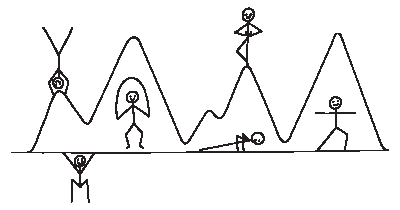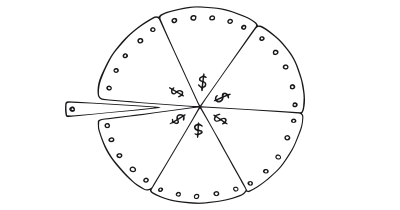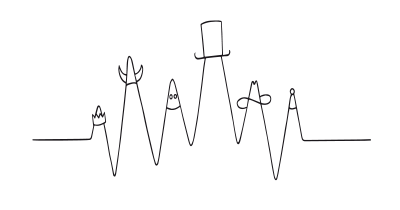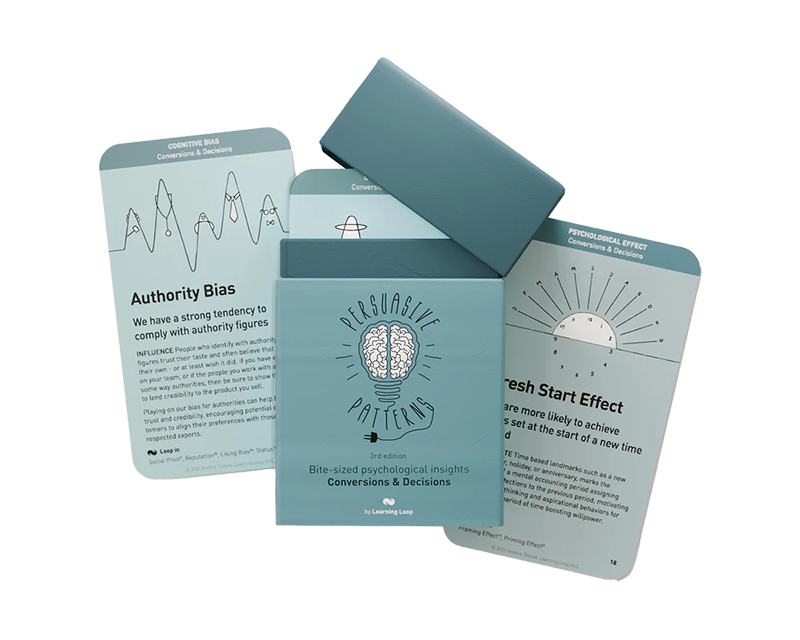Persuasive Patterns: Influence
Halo Effect
We let impressions created in one area influence opinions in another area

The Halo Effect is a cognitive bias where an individual’s overall impression of a person, brand, or product in one area influences their feelings and thoughts in other areas. This occurs because our brains tend to simplify complex information processing by using shortcuts, leading to certain biases in our judgments.
Imagine walking into a new café in town. The exterior of the café is immaculate, with tasteful decor and welcoming signs. Upon entering, you’re immediately impressed by the ambiance - the lighting is perfect, and soft music plays in the background. Even before you taste the coffee or try any food, you’re already expecting it to be of high quality, just based on your initial observations. When you finally do order and taste the coffee, even if it’s of average quality, you might rate it as excellent, influenced by the initial positive impressions the café made on you.
Consider a digital news portal that offers daily updates on various topics. The site design is modern and articles are complemented with engaging visuals. The categorization is clear, making it easy for you to navigate and find topics of interest. Before diving deep into the content, you already expect the reporting to be accurate and well-researched based on the site’s layout and design. When reading, even if the information is similar to what’s provided on other platforms, you’re likely to trust and value this source more due to the platform’s appealing user interface.
The term “Halo Effect” was first coined by psychologist Edward L. Thorndike in the early 20th century. Thorndike observed this phenomenon while evaluating military officers, noting that positive qualities in one area seemed to “spill over” and influence perceptions in other areas. Over the decades, numerous studies have been conducted to validate and understand this effect, especially its implications in areas like marketing, hiring processes, and product evaluations.
The foundational study
In a seminal experiment by Nisbett & Wilson in 1977, participants were shown videos of the same individual behaving in a manner that was either warm and friendly or cold and distant. Following this, they were asked to rate the individual on various unrelated characteristics, such as physical appearance, mannerisms, and accent. The results were striking: participants who viewed the “warm” version of the individual consistently rated him more favorably across all unrelated characteristics compared to those who viewed the “cold” version. This study provided clear evidence that a single positive or negative trait (in this case, warmth or coldness) can significantly influence one’s perception of entirely unrelated characteristics, demonstrating the pervasive power of the halo effect.
B. Nisbett, R., & Wilson, T. (1977). The halo effect: Evidence for unconscious alteration of judgments. Journal of Personality and Social Psychology, 35(4), 250-256.
Originating from social psychology, the Halo Effect extends its influence across various domains, including product design and branding. Essentially, when users have a positive experience or perception in one aspect of a product, service, or brand, this positivity tends to spill over, influencing their judgment and perception of other unrelated aspects. Conversely, a negative impression in one area can tarnish perceptions in other areas. Recognizing and harnessing the power of the Halo Effect can lead to more effective branding, design, and marketing strategies.
If users have a positive experience with one feature or aspect of a product, it’s likely they will perceive other features more favorably, enhancing the overall user experience. Similarly, a negative experience in one area can tarnish the overall user experience.
The Halo Effect is highly relevant to branding because a positive perception in one aspect of a brand (e.g., high-quality products) can lead consumers to assume other positive attributes about the brand (e.g., ethical business practices). This can foster brand loyalty and make marketing campaigns more effective.
Designing products with the Halo Effect
Understanding the halo effect is crucial for designers and marketers alike. A product or interface that is perceived positively in one aspect might also be perceived as more usable or functional, even if that’s not objectively the case.
One of the most evident manifestations of the Halo Effect in the digital realm is design aesthetics. A well-designed product or website often leads users to perceive it as more functional or reliable, even if those attributes are unrelated to its design. This perception is sometimes referred to as the Affect-Usability Effect. Hence, investing in a pleasing and intuitive design can enhance users’ overall experience and their assessment of other product attributes.
An effective strategy in capturing the power of the Halo Effect is to lead with a product’s strongest attribute, ensuring that it is the first thing a user notices. This positive first impression can then spill over into perceptions of other attributes.
For instance, if a software application excels in its user interface design, making sure that this aesthetic excellence is the first thing a user experiences can create a positive halo around other features, even if they are average in performance. Similarly, brands can leverage endorsements from well-regarded figures or entities, as their positive reputation can cast a favorable light on the product or service. However, it’s crucial to ensure that the association is genuine and not forced, as authenticity plays a significant role in the effectiveness of the Halo Effect.
Visually arranging and bundling of products can influence perceptions and drive sales. For instance, placing complementary products close to each other or bundling them together can encourage additional purchases. The key is to identify products that have a broader influence on related products, akin to how the mere placement of limes in a store can drive the sale of associated products like chicken or alcohol.
Associating your product with authoritative figures or celebrities is another effective strategy. When a trusted figure endorses or uses a product, their positive attributes can transfer to the product, creating a halo around it. However, it’s essential to approach this tactic with caution, ensuring that the association aligns with the brand’s values and image to avoid potential pitfalls.
The Halo Effect predominantly works on initial perceptions. Ensure that the first interaction users have with your product or service is aesthetically pleasing or evokes positive emotions. This sets the tone for subsequent interactions.
While the Halo Effect can create a favorable perception, maintaining this perception requires consistency across all touchpoints. Whether it’s design, messaging, or user experience, ensure that the positive attributes are consistent.
If a brand or product leans too heavily on a single positive attribute or endorsement without supporting quality in other areas, it risks disappointing users in the longer run. Such discrepancies between perception and reality can lead to backlash.
Forced or inauthentic associations can be counterproductive. For example, if a product gains an endorsement from a celebrity who has no genuine connection or expertise related to the product, consumers may see through the ploy, leading to skepticism rather than trust. It’s essential to ensure that any effort to harness the Halo Effect is rooted in genuine quality and authentic associations.
Ethical recommendations
The Halo Effect, by its very nature, can lead to biased judgments, and when intentionally misused in product design or marketing, it can be detrimental to users. Some potential misuses include:
- Misrepresentation
Companies might leverage the Halo Effect to present their products or services in a misleading manner. For instance, if a brand is known for its eco-friendly initiatives, it might release a product with minimal sustainable attributes but market it as “eco-friendly,” leading users to believe they are making an environmentally conscious choice when they might not be. - Overshadowing flaws
The positive attributes of a product or service can overshadow its flaws or drawbacks. For example, a well-designed application with serious security flaws might be adopted widely due to its aesthetic appeal, potentially compromising user data. - Manipulating choices
By creating a strong Halo Effect around certain products, companies can manipulate user choices, pushing them towards options that might not be in their best interest but are more profitable for the company.
To ensure the ethical application of the Halo Effect, consider the following best practices:
- Transparency
Always provide clear and accurate information about products or services. If there are potential drawbacks, be upfront about them. Leveraging the Halo Effect should not come at the expense of honesty. - Keep the user’s best interest in mind
While it’s beneficial to use the Halo Effect to enhance user perception, the primary goal should always be to serve the user’s best interests. This means ensuring that the core product or service genuinely benefits the user.
Real life Halo Effect examples
Apple
Apple’s reputation for meticulous design and pioneering innovation was initially cemented with products like the iPod and MacBook. This halo effect around Apple’s commitment to excellence and user-centric design meant that when they launched the iPhone, it was automatically perceived with a high degree of trust and anticipation, even before consumers got to experience the product in its entirety.
Zappos
Zappos has become synonymous with exemplary customer service. When customers have one positive experience, be it easy returns or friendly customer service interactions, it casts a halo effect over the entirety of the company. This means that consumers are more likely to choose Zappos again or even recommend it to others, trusting that the company will consistently deliver on its promise of superior service, even if they might find slightly cheaper options elsewhere.
Dropbox
Dropbox made its mark by offering a simple, intuitive, and reliable cloud storage solution. This initial reputation created a halo effect, wherein users automatically associated Dropbox with trustworthiness and efficiency. As Dropbox expanded its suite of services, introducing collaborative tools and business solutions, this halo effect meant that users were more willing to try these new offerings, already confident in the quality and reliability they would provide.
Trigger Questions
- How do users perceive the aesthetics of our design, and could it benefit from a refresh to create a more favorable first impression?
- Are there authoritative figures, celebrities, or visuals that align with our design's objectives and could enhance its perception?
- Are there specific elements or features in our design that could influence the perception of other related components, and how can we strategically place or bundle them?
- Beyond visual elements, how can we enhance other sensory aspects of our design to create a holistic positive experience?
- Is the positive attribute we're focusing on consistent across all touchpoints of our design, ensuring a uniform and favorable impression throughout the user's journey?
Pairings
Halo Effect + Commitment Devices
An educational platform with a reputation for producing successful students might introduce a commitment contract, where users pledge to complete a course in a set time. The platform’s reputation could make students more willing to commit, believing that sticking to the platform’s program will ensure their success.

We let impressions created in one area influence opinions in another area

Make it easier for users to avoid acting against one's better judgment
Halo Effect + Unlock Features
A publishing platform renowned for high-quality content could have a feature where reading and engaging with content unlocks exclusive interviews or behind-the-scenes content. Users might perceive these unlocked features as higher quality because of the platform’s overall reputation.

We let impressions created in one area influence opinions in another area

Reward specific behaviors by enabling new capabilities
Halo Effect + Commitment & Consistency
A well-respected online course platform might introduce a feature where users set and share their learning goals. When users commit publicly on a platform they respect, the Halo Effect intensifies their commitment, as they associate their learning journey with the platform’s credibility.

We let impressions created in one area influence opinions in another area

We want to appear consistent with our stated beliefs and prior actions
Halo Effect + Role Playing
A renowned financial planning platform might introduce a simulation feature where users can role-play different investment strategies. As users engage with this feature, the platform’s reputation for effective financial education is enhanced, creating a Halo Effect that makes users more trusting of its other offerings.

We let impressions created in one area influence opinions in another area

People act according to their persona
A brainstorming tool packed with tactics from psychology that will help you increase conversions and drive decisions. presented in a manner easily referenced and used as a brainstorming tool.
Get your deck!- A constant error in psychological ratings by Thorndike
- The halo effect: Evidence for unconscious alteration of judgments by Nisbett & Wilson
- Halo Effect: Overview, History and Examples at Investopedia
- Halo effect at Wikipedia (en)
- Rosenzweig, P. (2007). The Halo Effect: ... and the Eight Other Business Delusions That Deceive Managers. The Free Press.
- Lindgaard, G. & Dudek, C. (2002). High appeal versus high usability: Implications for user satisfaction, HF2002 Human Factors Conference, Melbourne, Australia, November 25–27.
- Thorndike, E.L. (1920). A constant error in psychological ratings. J. Appl. Psychol., 4, 25-29.
- Dion, K., Berscheid, E., & Walster, E. (1972). What is beautiful is good. Journal of Personality and Social Psychology, 24(3), 285–290.
